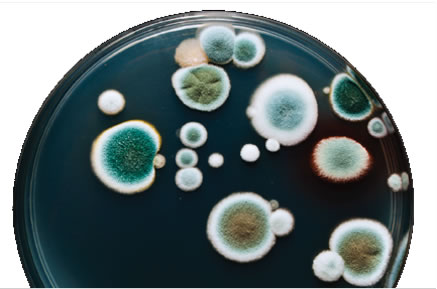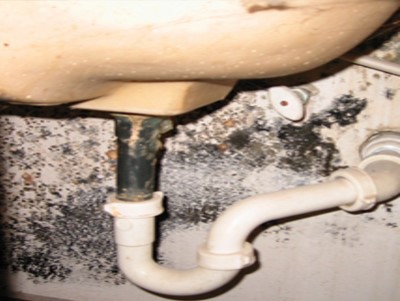When it Rains, it Molds: Part 2 of 2
By Marcia Anderson
When I was in EPA Region 2 (New York, New Jersey, Puerto Rico and the Virgin Islands) I visited several schools that had questions about mold. This prompted a follow-up discussion with Mark Berry, EPA’s Region 6 (Serving Arkansas, Louisiana, New Mexico, Oklahoma, Texas and 66 Tribes) Indoor Air Quality Coordinator about common mold questions resulting from these visits. An earlier blog looked at general questions about mold and moisture. Here, we focus on these issues in schools.
What are the most impacted areas in school buildings?
Areas without adequate air flow by themselves are not, necessarily the issue – it is areas where it is damp or humid and the airflow isn’t adequate enough to help dry up the moisture. Problem areas may be in the walls behind restrooms, kitchens, gyms, facility manager closets, near air conditioners, compressors and in damp basements. Moisture problems in schools may also be associated with delayed or insufficient maintenance due to budget and other constraints. Temporary structures, such as trailers and portable classrooms, have frequently been associated with moisture and mold problems. Most respiratory issues are associated with poor ventilation or outdated HVAC units. Mold is often targeted as the cause for illness, but, in fact, the mold is an indicator of moisture.
One area that is often impacted by mold and moisture problems in schools are gym locker rooms. Do you have any advice for school facility managers?
It is common for mold to grow on and around areas that are continuously wet. The moisture has a tendency to increase the relative humidity levels in a building, providing the perfect environment for mold and mold spores to grow.
- Vent showers and other moisture-generating sources to the outside;
- Control humidity levels and dampness by using air conditioners and de-humidifiers to provide adequate ventilation.
- Maintain indoor humidity levels between 30-60 percent.
- Students should remove clothing from their gym lockers at least weekly, and damp laundry, such as towels, should be removed daily.
For existing mold, the first step is to eliminate the moisture source, then take appropriate steps to clean it up. The EPA does not encourage the use of harsh chemicals for mold clean-up. Soap and water will suffice. These measures, along with monitoring for adequate ventilation, locker checks and educating students about the importance of following these guidelines, will go a long way to decreasing mold in your school.
What do we do if we suspect hidden mold?
Investigating hidden mold problems may be difficult and will require caution when it involves disturbing potential sites of mold growth. If you believe that you may have a hidden mold problem, consider hiring an experienced professional.
What can building facility managers do to decrease the incidence of mold in their buildings?
EPA’s guidance is solutions based – to focus on the source of the moisture that feeds the mold. The three principles of mold remediation are:
- Fix and eliminate the moisture source.
- Clean and remove mold and mold spores. In many cases detergent and water will be sufficient – there is no need to use harsh chemicals that may endanger your health. Follow all manufacturer’s directions when using cleaning products.
- Dry out the area. If you continue to see mold growing, you have not eliminated the moisture source and should repeat step 1.
Does carpet cause mold or related allergy problems in schools?
Carpet use in schools provides a decrease in noise, falls and injuries. Mold problems can be encountered with carpet and many other materials if the school has any type of water intrusion or moisture problem, such as a leaky roof. If carpeting remains damp, it can become a primary source for microbial growth, which frequently results in adverse health effects. Carpet and other furnishings that become significantly water damaged should be removed and discarded. Use care to prevent excess moisture or cleaning residue accumulation and ensure that cleaned areas are dried quickly. In areas where there is a perpetual moisture, do not install carpeting (i.e., by drinking fountains, by classroom sinks, or on concrete floors with leaks or frequent condensation).
How does mold affect asthma?
Molds can trigger asthma episodes in sensitive individuals with asthma. People with asthma should limit contact with and exposure to areas contaminated with a mold presence. However, remember that molds are a natural part of the environment – and it is impossible to totally avoid mold for asthmatics. EPA provides very useful information on mold and asthma.
How does mold remediation compare to Integrated Pest Management (IPM)?
IPM and mold remediation are both based on the principle of limiting sources of the primary needs for life – but they are very different practices. Molds are microscopic fungi that grow best in damp places such as kitchens, bathrooms and basements. Mold has the same basic needs as any pest: 1. Mold needs a surface to grow on; 2. Food (paper, wood, carpet, food, insulation or other organic fibers); and 3. Water (moisture to germinate and grow). IPM is similar, in that it employs common sense strategies to reduce sources of food, water and shelter for pests in your school buildings. If just one of the essential components that a pest needs to survive can be removed, then the pest cannot survive. In the case of mold, remove the moisture. Mold problem solved.
For more information on controlling mold and moisture, visit www.epa.gov/mold
About the Author: Marcia is with EPA’s Center of Expertise for School IPM in Dallas, Texas. She holds a PhD in Environmental Management from Montclair State University along with degrees in Biology, Environmental Design, Landscape Architecture, and Instruction and Curriculum. Marcia was formerly with the EPA Region 2 Pesticides Program and has been a professor of Earth and Environmental Studies, Geology, and Oceanography at several universities.






